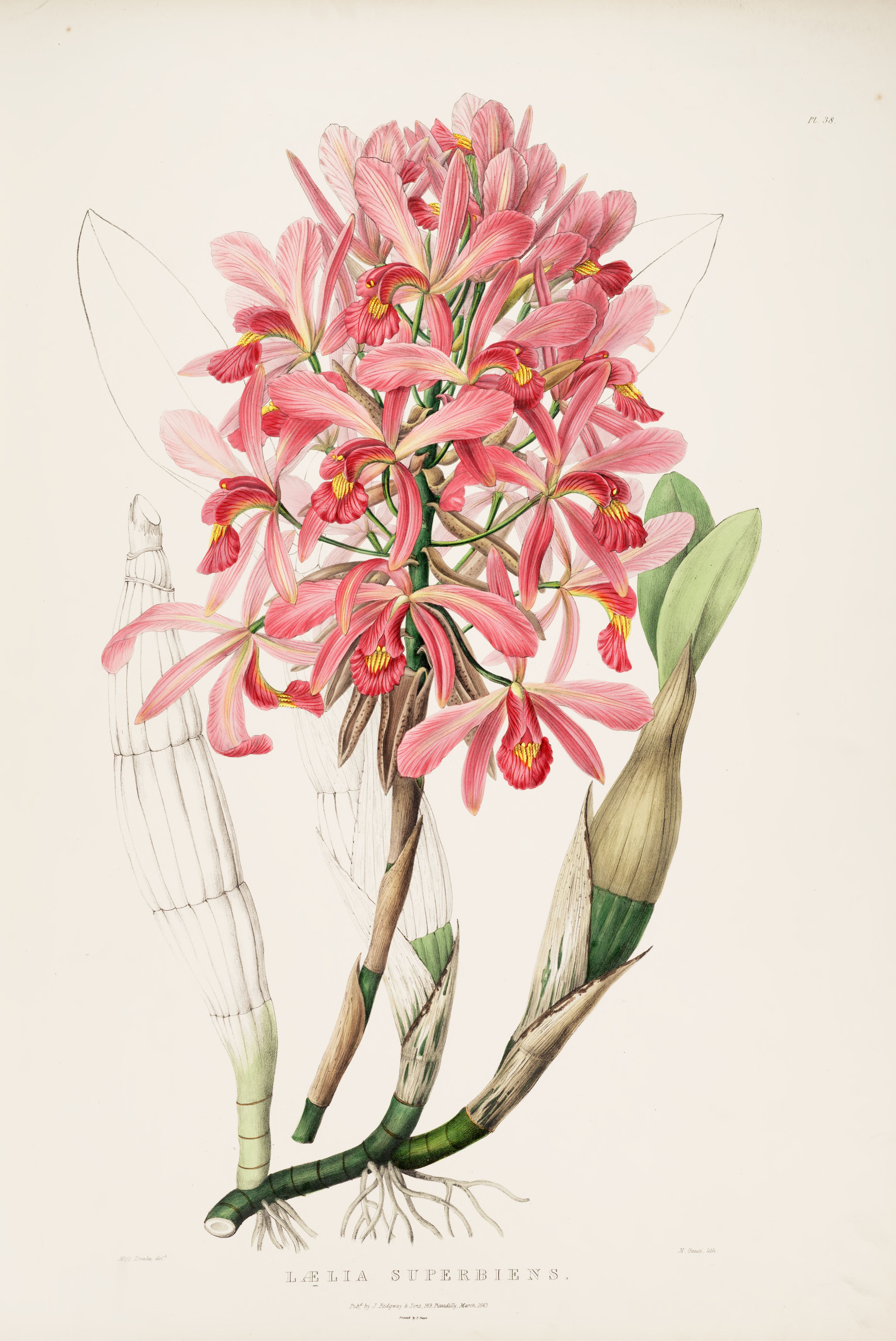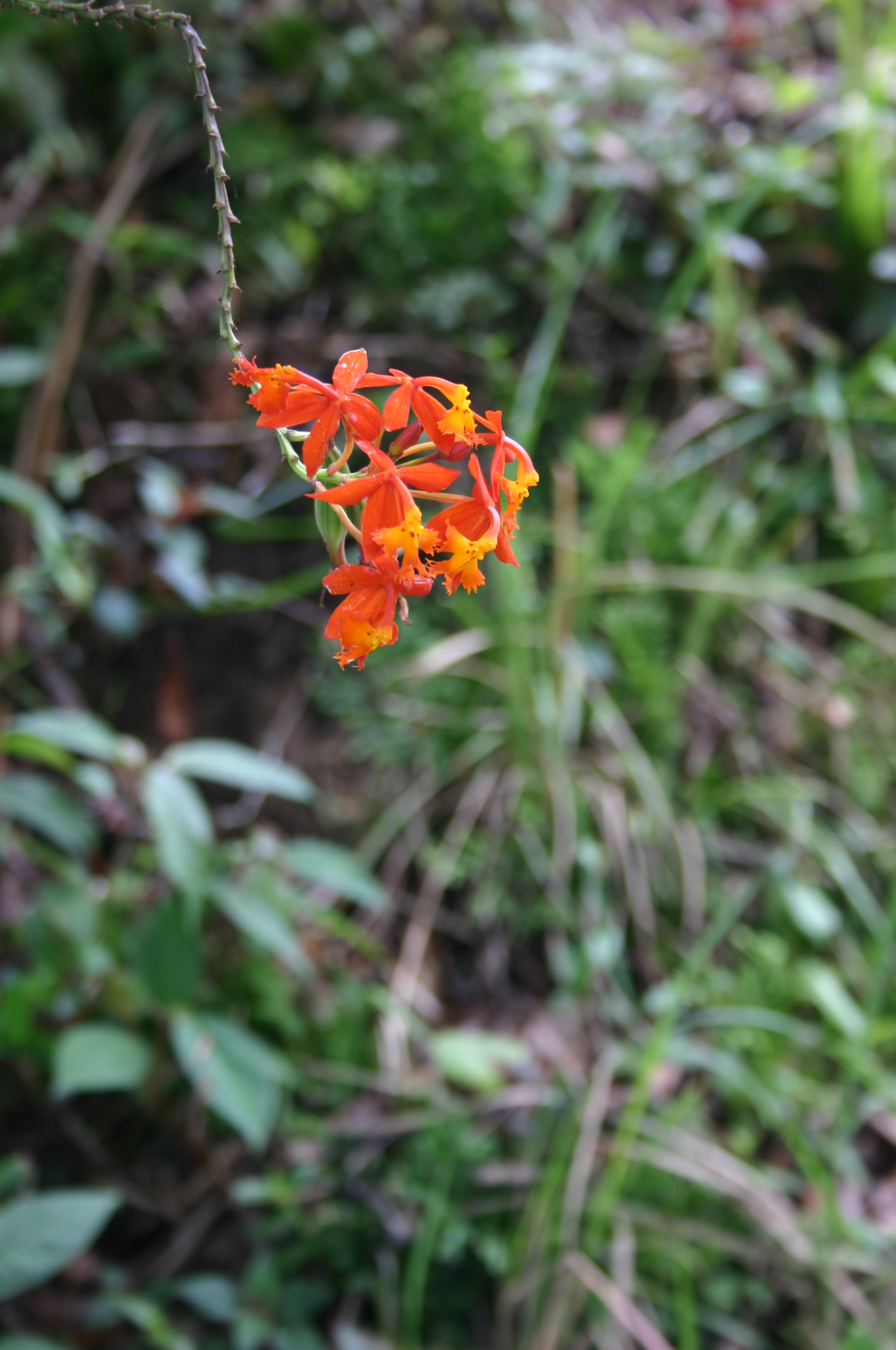|
Epidendrum Miserrimum
''Epidendrum miserrimum'' ("the most miserable ''Epidendrum''") is a small sympodial epiphytic orchid native to northern South America, the West Indies and Central America at altitudes as low as 0.7 km and as high as 1.2 km. Description Reichenbach describes ''E. miserrimum'' as poorer than '' E. carinatum''."Pone E. carinatum (L. F. 191) tenuiculum" and again "Caules tenuiculi ramosuli subflexuosi", H. G. Reichenbach "Orchides" item 243 in C. Müller, Ed. ''Walpers Annales Botanices Systematicae, Tomus VI'' p. 381. Berlin. 1861 The weedy stems grow to 10 cm tall and are surrounded by imbricating foliaceous sheathes. The acute, lanceolate leaves grow up to 5 cm long. The few flowered racemose inflorescence grows from the apex of the stem, and is covered with imbricating sheathes. The floral bract is longer than the tiny, green flowers. The sepals are 4 mm long and do not open fully; the linear petals are 3 mm long. The 3 mm ... [...More Info...] [...Related Items...] OR: [Wikipedia] [Google] [Baidu] |
Rchb
Heinrich Gottlieb Ludwig Reichenbach (8 January 1793 – 17 March 1879) was a German botanist and ornithologist. It was he who first requested Leopold Blaschka to make a set of glass marine invertebrate models for scientific education and museum showcasing, the successful commission giving rise to the creation of the Blaschkas' Glass sea creatures and, subsequently and indirectly, the more famous Glass Flowers. Early life Born in Leipzig and the son of Johann Friedrich Jakob Reichenbach (the author in 1818 of the first Greek-German dictionary) Reichenbach studied medicine and natural science at the University of Leipzig in 1810 and, eight years later in 1818, he the now Professor became an instructor before, in 1820, he was appointed the director of the Dresden natural history museum and a professor at the Surgical-Medical Academy in Dresden, where he remained for many years. Glass sea creatures Director of the natural history museum in Dresden, Professor Reichenbach was fa ... [...More Info...] [...Related Items...] OR: [Wikipedia] [Google] [Baidu] |
Sympodial
Sympodial growth is a bifurcating branching pattern where one branch develops more strongly than the other, resulting in the stronger branches forming the primary shoot and the weaker branches appearing laterally. A sympodium, also referred to as a sympode or pseudaxis, is the primary shoot, comprising the stronger branches, formed during sympodial growth. The pattern is similar to dichotomous branching; it is characterized by branching along stems or hyphae. In botany, sympodial growth occurs when the apical meristem is terminated and growth is continued by one or more lateral meristems, which repeat the process. The apical meristem may be consumed to make an inflorescence or other determinate structure, or it may be aborted. Types If the sympodium is always formed on the same side of the branch bifurcation, e.g. always on the right side, the branching structure is called a helicoid cyme or bostryx. If the sympodium occurs alternately, e.g. on the right and then the left ... [...More Info...] [...Related Items...] OR: [Wikipedia] [Google] [Baidu] |
Epiphyte
An epiphyte is an organism that grows on the surface of a plant and derives its moisture and nutrients from the air, rain, water (in marine environments) or from debris accumulating around it. The plants on which epiphytes grow are called phorophytes. Epiphytes take part in nutrient cycles and add to both the diversity and biomass of the ecosystem in which they occur, like any other organism. They are an important source of food for many species. Typically, the older parts of a plant will have more epiphytes growing on them. Epiphytes differ from parasites in that they grow on other plants for physical support and do not necessarily affect the host negatively. An organism that grows on another organism that is not a plant may be called an epibiont. Epiphytes are usually found in the temperate zone (e.g., many mosses, liverworts, lichens, and algae) or in the tropics (e.g., many ferns, cacti, orchids, and bromeliads). Epiphyte species make good houseplants due to their minimal ... [...More Info...] [...Related Items...] OR: [Wikipedia] [Google] [Baidu] |
Orchidaceae
Orchids are plants that belong to the family Orchidaceae (), a diverse and widespread group of flowering plants with blooms that are often colourful and fragrant. Along with the Asteraceae, they are one of the two largest families of flowering plants. The Orchidaceae have about 28,000 currently accepted species, distributed in about 763 genera. (See ''External links'' below). The determination of which family is larger is still under debate, because verified data on the members of such enormous families are continually in flux. Regardless, the number of orchid species is nearly equal to the number of bony fishes, more than twice the number of bird species, and about four times the number of mammal species. The family encompasses about 6–11% of all species of seed plants. The largest genera are '' Bulbophyllum'' (2,000 species), '' Epidendrum'' (1,500 species), '' Dendrobium'' (1,400 species) and '' Pleurothallis'' (1,000 species). It also includes '' Vanilla'' (the genus ... [...More Info...] [...Related Items...] OR: [Wikipedia] [Google] [Baidu] |
South America
South America is a continent entirely in the Western Hemisphere and mostly in the Southern Hemisphere, with a relatively small portion in the Northern Hemisphere at the northern tip of the continent. It can also be described as the southern Subregion#Americas, subregion of a single continent called Americas, America. South America is bordered on the west by the Pacific Ocean and on the north and east by the Atlantic Ocean; North America and the Caribbean Sea lie to the northwest. The continent generally includes twelve sovereign states: Argentina, Bolivia, Brazil, Chile, Colombia, Ecuador, Guyana, Paraguay, Peru, Suriname, Uruguay, and Venezuela; two dependent territory, dependent territories: the Falkland Islands and South Georgia and the South Sandwich Islands; and one administrative division, internal territory: French Guiana. In addition, the ABC islands (Leeward Antilles), ABC islands of the Kingdom of the Netherlands, Ascension Island (dependency of Saint Helena, Asce ... [...More Info...] [...Related Items...] OR: [Wikipedia] [Google] [Baidu] |
West Indies
The West Indies is a subregion of North America, surrounded by the North Atlantic Ocean and the Caribbean Sea that includes 13 independent island countries and 18 dependencies and other territories in three major archipelagos: the Greater Antilles, the Lesser Antilles, and the Lucayan Archipelago. The subregion includes all the islands in the Antilles, plus The Bahamas and the Turks and Caicos Islands, which are in the North Atlantic Ocean. Nowadays, the term West Indies is often interchangeable with the term Caribbean, although the latter may also include some Central and South American mainland nations which have Caribbean coastlines, such as Belize, French Guiana, Guyana, and Suriname, as well as the Atlantic island nations of Barbados, Bermuda, and Trinidad and Tobago, all of which are geographically distinct from the three main island groups, but culturally related. Origin and use of the term In 1492, Christopher Columbus became the first European to record ... [...More Info...] [...Related Items...] OR: [Wikipedia] [Google] [Baidu] |
Central America
Central America ( es, América Central or ) is a subregion of the Americas. Its boundaries are defined as bordering the United States to the north, Colombia to the south, the Caribbean Sea to the east, and the Pacific Ocean to the west. Central America consists of eight countries: Belize, Costa Rica, El Salvador, Guatemala, Honduras, Mexico, Nicaragua, and Panama. Within Central America is the Mesoamerican biodiversity hotspot, which extends from northern Guatemala to central Panama. Due to the presence of several active geologic faults and the Central America Volcanic Arc, there is a high amount of seismic activity in the region, such as volcanic eruptions and earthquakes which has resulted in death, injury, and property damage. In the pre-Columbian era, Central America was inhabited by the indigenous peoples of Mesoamerica to the north and west and the Isthmo-Colombian peoples to the south and east. Following the Spanish expedition of Christopher Columbus' ... [...More Info...] [...Related Items...] OR: [Wikipedia] [Google] [Baidu] |
Epidendrum Carinatum
''Epidendrum'' , abbreviated Epi in the horticultural trade, is a large neotropical genus of the orchid family. With more than 1,500 species, some authors describe it as a mega-genus. The genus name (from Greek ''επί, epi'' and ''δένδρον, dendron'', "upon trees") refers to its epiphytic growth habit. When Carl Linnaeus named this genus in 1763, he included in this genus all the epiphytic orchids known to him. Although few of these orchids are still included in the genus ''Epidendrum'', some species of ''Epidendrum'' are nevertheless not epiphytic. Distribution and ecology They are native to the tropics and subtropical regions of the American continents, from North Carolina to Argentina. Their habitat can be epiphytic, terrestrial (such as '' E. fulgens''), or even lithophytic (growing on bare rock, such as '' E. calanthum'' and '' E. saxatile''). Many are grown in the Andes, at altitudes between 1,000 and 3,000 m. Their habitats include humid jungles, ... [...More Info...] [...Related Items...] OR: [Wikipedia] [Google] [Baidu] |
Raceme
A raceme ( or ) or racemoid is an unbranched, indeterminate type of inflorescence bearing flowers having short floral stalks along the shoots that bear the flowers. The oldest flowers grow close to the base and new flowers are produced as the shoot grows in height, with no predetermined growth limit. Examples of racemes occur on mustard (genus '' Brassica'') and radish (genus '' Raphanus'') plants. Definition A ''raceme'' or ''racemoid'' is an unbranched, indeterminate type of inflorescence bearing pedicellate flowers (flowers having short floral stalks called '' pedicels'') along its axis. In botany, an ''axis'' means a shoot, in this case one bearing the flowers. In indeterminate inflorescence-like racemes, the oldest flowers grow close to the base and new flowers are produced as the shoot grows in height, with no predetermined growth limit. A plant that flowers on a showy raceme may have this reflected in its scientific name, e.g. the species '' Cimicifuga racemosa''. A comp ... [...More Info...] [...Related Items...] OR: [Wikipedia] [Google] [Baidu] |
Inflorescence
An inflorescence is a group or cluster of flowers arranged on a stem that is composed of a main branch or a complicated arrangement of branches. Morphologically, it is the modified part of the shoot of seed plants where flowers are formed on the axis of a plant. The modifications can involve the length and the nature of the internodes and the phyllotaxis, as well as variations in the proportions, compressions, swellings, adnations, connations and reduction of main and secondary axes. One can also define an inflorescence as the reproductive portion of a plant that bears a cluster of flowers in a specific pattern. The stem holding the whole inflorescence is called a peduncle. The major axis (incorrectly referred to as the main stem) above the peduncle bearing the flowers or secondary branches is called the rachis. The stalk of each flower in the inflorescence is called a pedicel. A flower that is not part of an inflorescence is called a solitary flower and its stalk ... [...More Info...] [...Related Items...] OR: [Wikipedia] [Google] [Baidu] |






